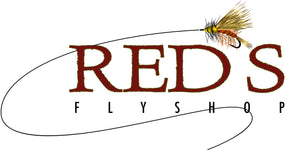CALL NOW (509) 933-2300
CALL NOW (509) 933-2300

I didn't understand how a dry/dropper or in this case a "Hopper Dropper" really worked. My nymphs were often too light, tippet too heavy, and I didn't know anything about how to slow my dry fly down slower than the surface currents in order to let the nymph and hopper work in a symbiotic unit. If you can get your nymph and dry fly working together at the right pace, your catch count will be MUCH higher.

I'll share a quick story before you watch this video. I can distinctly remember guiding about 10 years ago, and we were fishing a hopper dropper here in the Yakima Canyon. I had fished this rig for a long time, had tons of success (or so I thought), and on this particular day we had fish eating both the dry fly and the nymph. So what happened was we had some big somewhat lethargic fish coming up and trying to sip the hopper and several eats in a row the hopper seemed to get pushed out of the trout's mouth by water and natural drag each time the trout attempted to eat the dry fly. To fix this, an angler should really work on what I describe as "backing the fly down" so the butt end of the fly is leading and it's essentially backing its way downstream with a tiny bit of upstream tension.
This allows the fish to approach the fly without being inhibited by the leading tippet. We started backing our hopper down all the seamlines to make sure that the next big sipper got the hopper fly sucked in without a miss. What happened next was an epiphany. We went from about half the fish on the hopper vs. the nymph, to 9 out of 10 on the nymph. The upward tension on the dry fly forced it to work with the nymph at a slower pace than the actual surface current. We were finally getting the fly to hover and hang in the slow water mid column!
It was a complete and utter game changing move and one I'll never forget. We landed about 30 trout that afternoon, some were quite exceptional and I'm convinced without the change to our presentation we would have seen about 5 of those 30 fish. There are some other tips in the video to take away, but rather than just connect two random flies it's wise to put some thought into this rig and fish it right.
